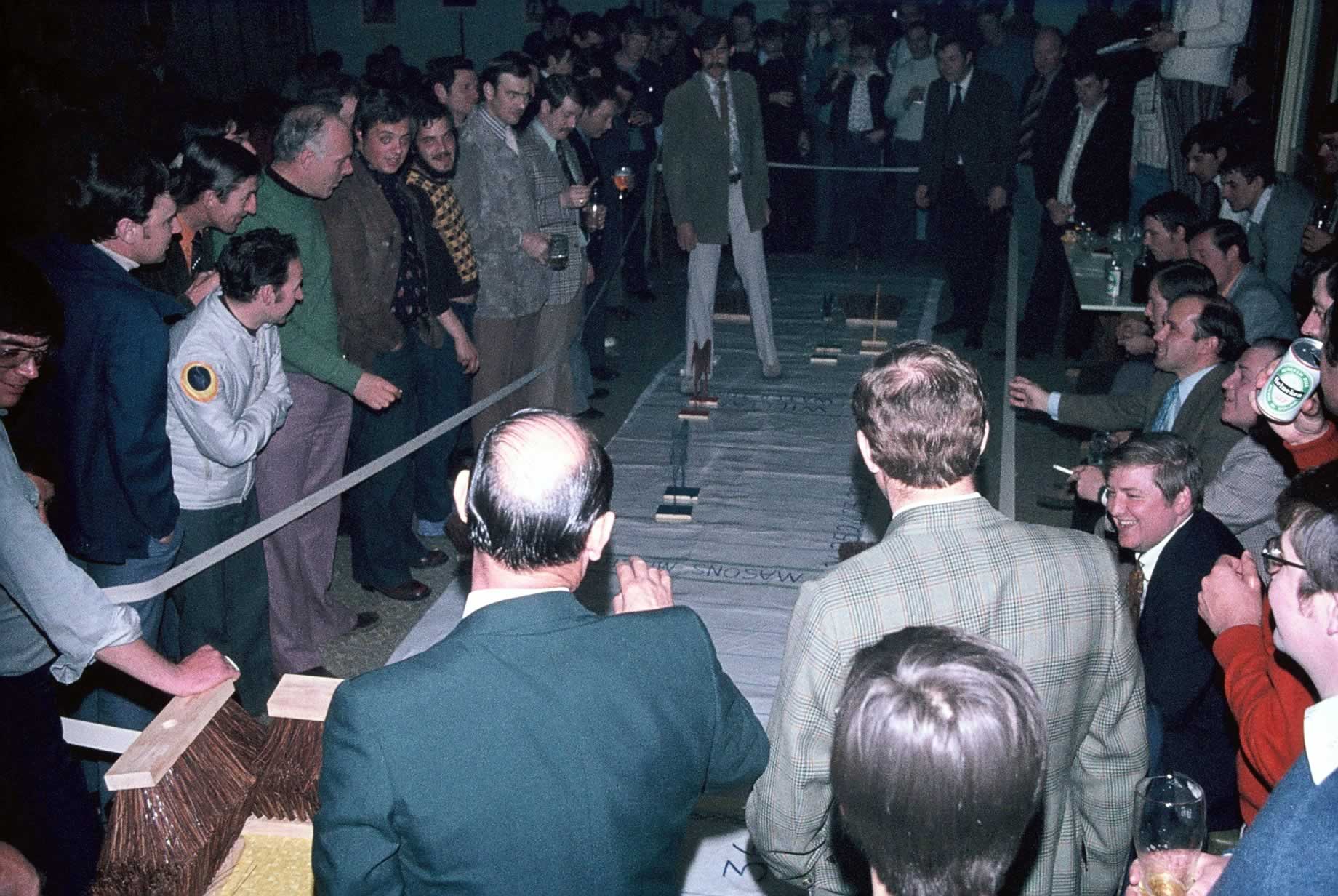No 31 Squadron
RAF Bruggen
7 Oct 1971 - 30 Jun 1976

A Flight of 31 Squadron formed at Farnborough on 11 October 1915. Soon afterwards the men sailed for Bombay, arriving on Boxing Day. Further Flights formed at Gosport, joining 31 at Risalpur by May 1916. This first operational military unit in Indian skies was soon in action along the North West Frontier, assisting the army in dealing with tribal unrest. Its BE2c biplanes were employed on artillery observation, reconnaissance and ground attack.
The end of WWI brought little change to the routine. Equipped now with Bristol Fighters, 31 Sqn army co-operation role was to continue for the next two decades. Emerging air power in the hostile Frontier region led to the Squadron's decisive involvement in the Third Anglo-Afghan War in 1919, and air policing proved an effective method of keeping skirmishing under control. Bases changed regularly as operations dictated. The most permanent was Quetta, but the Squadron suffered many fatalities there in 1935 when a massive earthquake struck the area.
31 had re-equipped with the Westland Wapiti in 1931, but 1939 saw a change of role. Following conversion to ancient Valentia twin-engined biplanes, the Squadron assumed the mantle of the existing Bomber/Transport flight at Lahore. The outbreak of WWII saw the Squadron's Frontier work continuing, although strategic transport tasks were added. But during 1941, 31 saw action in Iraq, Syria, Iran and Egypt. Initially this involved Valentias, but receipt of Douglas DC-2s brought a significant upgrade, as well as concentration on purely transport duties. 31 subsequently continued until 1947 with the Dakota family, re-equipping in turn with DC-3s and C-47s.
The Squadron flew in Burma from early 1942, valiantly supporting the Fourteenth, the Forgotten Army, until the Japanese were evicted in 1945. Duties were re-supply, air-drop, and casevac. Operating in monsoon conditions, largely from Indian bases, 31 suffered many losses. The Squadron supported Chindit raids, the epic battles of Kohima, Imphal and the Arakan, as well as Hump runs across the eastern Himalayas to China.
After Japan's surrender, 31 moved to Java to transport released internees and POWs from jungle camps to repatriation centres. This humanitarian mission evolved into combat as the Indonesian independence movement gained momentum, and the Squadron suffered many casualties. Indeed a number of its personnel were murdered near its base at Kemajorang. Java operations ended in autumn 1946, and the Squadron reformed near Karachi. During religious and ethnic unrest associated with Indian independence and partition, thousands of refugees were transported. From Independence Day, 15 August 1947, the Squadron's base at Mauripur found itself in newly-formed Pakistan.
With its task completed, the Squadron disbanded a the years end. In July 1948 31 Squadron reformed at RAF Hendon, its first home base since 1915. Equiped with Ansons and Devons, the Squadron flew communications and air ambulance duties. Spitfires, Proctors and Chipmunks were also available, both for communications and to keep staff officers in current flying practice.
In 1955 31 Squadron returned to the front line at RAF Laarbruch in Germany, operating Canberra PR7s. Assigned to NATO, the Squadron specialised in reconnaisance until 1971, when it moved to RAF Bruggen and re-equiped with the Phantom FGR2. This brought a change to Strike, Attack, a role retained through successive re-equipments with the Jaguar GR1 in 1976 and the Tornado GR1 in 1984. As well as maintaining a conventional capability, 31 Squadron remained a part of NATOs deterrent force until, following the collapse of the Soviet Union and the Warsaw Pact, the RAFs Nuclear weapons were withdrawn.
Despite the thawing of the Cold War, operations occupied 31 Squadron for upwards of twenty years from the time of the 1991 Gulf War. During that conflict, OC 31 Squadron led the GR1 contingent at Dharan, Saudi Arabia, which comprised not only of 31 Squadron but also elements of five other Squadrons. Middle Eastern Air Policing continued and in 1999 31 Squadron also participated in air operations over the Former Republic of Yugoslavia. Operating in the interdiction role, these missions were flown both long-range from Bruggen and from Solenzara, Corsica.
With the withdrawal of RAF Forces from Germany the Goldstars as 31 Squadron was coming to be known came home again, this time to their current location at RAF Marham. In 2001 31 Squadron was the last RAF Squadron to leave Germany.
Air Policing operations continued from Kuwait, escalating into the Iraq War of March 2003. During this, the Squadron formed the core of the Tornado GR4 Combat Air Wing and as in 1991, 31 Squadron CO found himself in the lead. Following cessation of these hostilities, the Squadron continued its approximately annual Army Support deployments, latterly to Qatar, as allied forces continued their mission to stabilise Iraq.
Almost as soon as the GR4s were released from the Gulf in 2009, they were assigned to Afghanistan and carried out regular deployments to Kandahar, performed in support of multi-national International Security Assistance Force Operations.
No. 31 Squadron was disbanded on 14 March 2019 at RAF Marham and will reform sometime in 2024 at RAF Waddington, Lincolnshire, operating the General Atomics Protector RG1.

 No. 228 OCU
No. 228 OCU No 6 Sqn
No 6 Sqn No 54 Sqn
No 54 Sqn XLI Sqn
XLI Sqn II(AC) Sqn
II(AC) Sqn No 14 Sqn
No 14 Sqn No 17 Sqn
No 17 Sqn No 31 Sqn
No 31 Sqn No 64(R) Sqn
No 64(R) Sqn No 43(F) Sqn
No 43(F) Sqn No 111(F) Sqn
No 111(F) Sqn No 29(F) Sqn
No 29(F) Sqn No 23(F) Sqn
No 23(F) Sqn No 56(F) Sqn
No 56(F) Sqn No 74(F) Sqn
No 74(F) Sqn No 19(F) Sqn
No 19(F) Sqn No 92(East India) Sqn
No 92(East India) Sqn No 23(F) Sqn
No 23(F) Sqn 1435 Flt
1435 Flt RAF Coningsby
RAF Coningsby RAF Bruggan
RAF Bruggan RAF Laarbruch
RAF Laarbruch RAF Leuchars
RAF Leuchars RAF Wattisham
RAF Wattisham RAF Wildenrath
RAF Wildenrath RAF Stanley
RAF Stanley RAF Mount Pleasant
RAF Mount Pleasant

